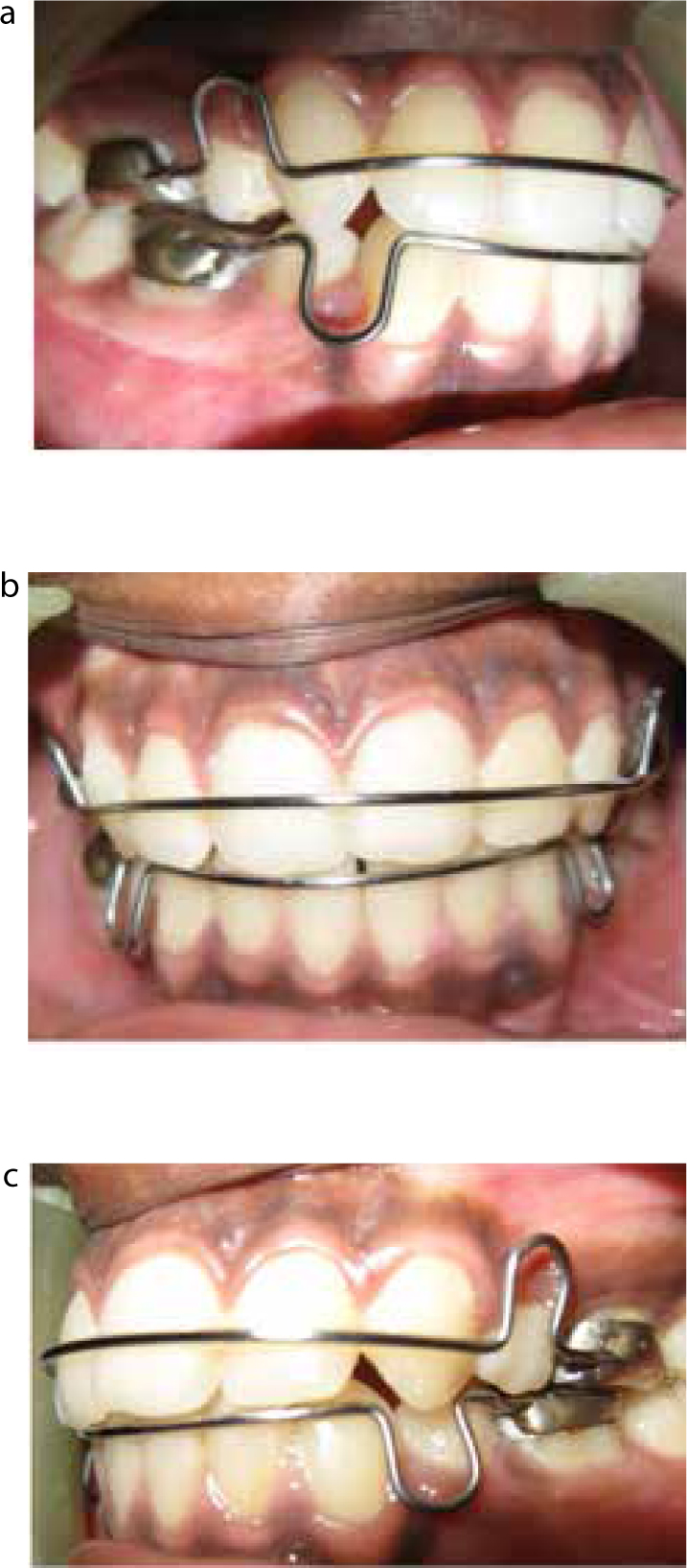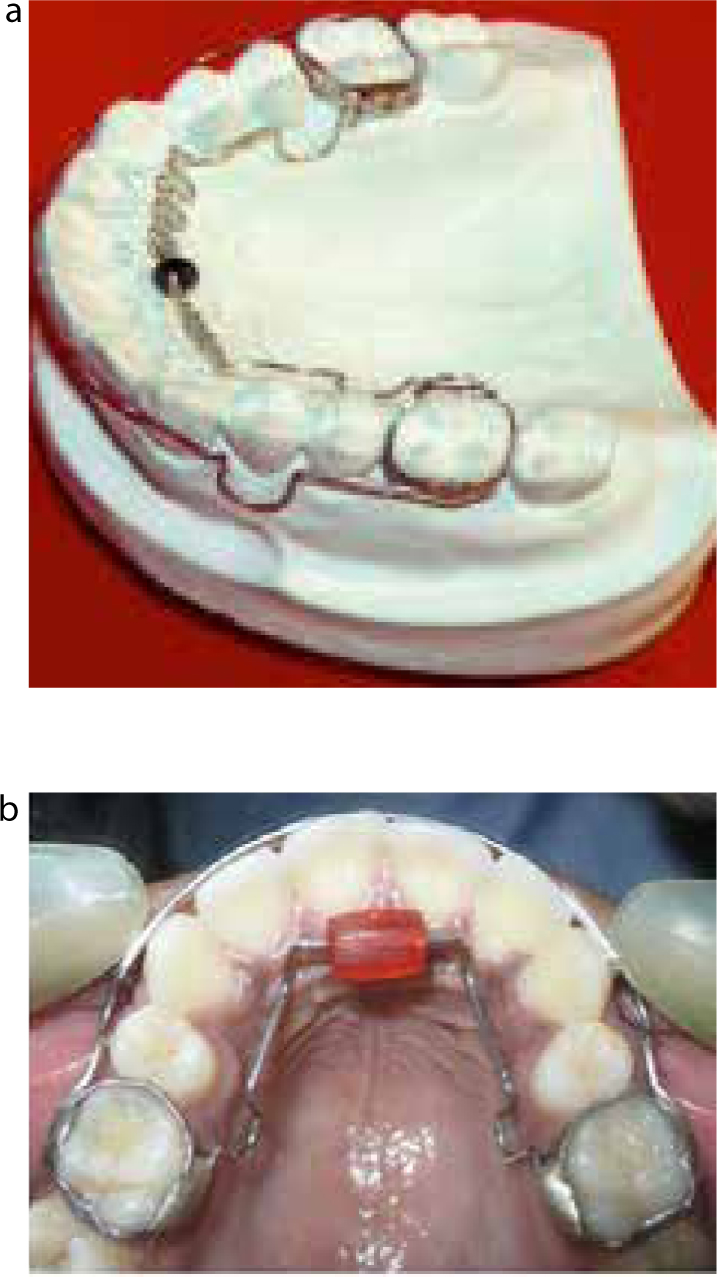Article
The Fixed Retention Appliance (FRA) is a fixed retainer which can be used after orthodontic therapy. It is effective in patients who show poor compliance with conventional removable retainers such as Hawley's retainer or Begg retainer.1 It can also incorporate lingual attachments, such as cribs or beads, when used as retainers in patients with a tongue-thrusting or thumb-sucking habit.2 FRA is effective in correcting mild proclination in less compliant patients and in patients who exhibit intolerance to acrylic plates.3
Appliance design and clinical procedure
The fixed retention appliance (Figure 1) has a simple design with two major components, a long labial bow and molar bands on first molars. The labial bow acts as the active component which contacts the anterior teeth. The labial bow can be constructed out of 0.7 mm or 0.9 mm stainless steel, depending on the purpose of the appliance. If the FRA is to be used only as a retentive appliance, the bow can be bent from a heavier 0.9 mm stainless steel wire. If any mild correction is required during the retentive phase it would be advantageous to make the labial bow from a thinner (0.7 mm) stainless steel wire (Figure 2).


The FRA can be delivered immediately after debonding of the brackets when used as a retainer after fixed appliance therapy. The brackets are debonded and the molar bands are removed and the buccal tubes are trimmed off using a bur. A long labial bow bent out of 0.9 mm stainless steel wire is soldered on to the molar bands. A sheath can also be used for attachment but soldering is preferred, especially in unco-operative patients where loosening of the bow may be a concern.
In cases where the FRA is to be used as a habit-breaking appliance or for mild anterior retraction, alginate impressions are taken of the maxillary and mandibular arches after placing the separators in the mesial and distal interdental area of the maxillary first molars. Taking an impression after the placement of separators will make band adaptation easier as the stone in the region of the separators can be cut giving enough space for band placement. Once proper size bands are adapted on the cast, a labial bow of the correct size is soldered on to the buccal surface of the molar bands. In cases with habits like tongue-thrusting or thumb-sucking, a tongue crib, tongue bead or a combination of both can be soldered on to the lingual aspect of the molar bands (Figure 3). The attachments can also be inserted into a lingual sheath.

At the chairside, the separators are removed from the mesial and distal aspects of the molars. The appliance is removed from the cast and cemented on to the separated molars using an appropriate luting cement.
The labial bow can be activated by compressing the ‘U’ loops inside the patient's mouth itself, using a Weingart plier, and taking care not to traumatize the gingiva. If it is difficult to adjust the appliance inside the patient's mouth, it can be taken out and activated by compressing the ‘U’ loops. The inside surface of the bands should be cleaned and cemented back in.
Discussion
The FRA is a simple appliance with minimal laboratory procedures. It can act as an effective retainer which can be used to undertake minor anterior corrections and is useful in patients who are reluctant to wear an acrylic plate, which may cause improper pronunciation for a period of time, or in less compliant patients who cannot be trusted to wear a removable retainer. This design allows the patient to avoid the acrylic plates and clasps of the commonly used removable retainers at the expense of not having the freedom of an ‘appliance free smile’ on socially sensitive occasions.
It is effective in preventing the reopening of the extraction space in cases with first bicuspid extractions4,5 and has all the advantages of a Begg retainer.
In cases with mild proclination, owing to tongue-thrusting, the labial bow can deal with the proclination while the crib or bead, which can be attached lingually, can act as a habit-breaker.6
Conclusion
The FRA is a simple and effective fixed appliance which can be used:
Hence, the FRA can act as a retainer, a habit-breaking appliance and as an active anterior retraction appliance.
